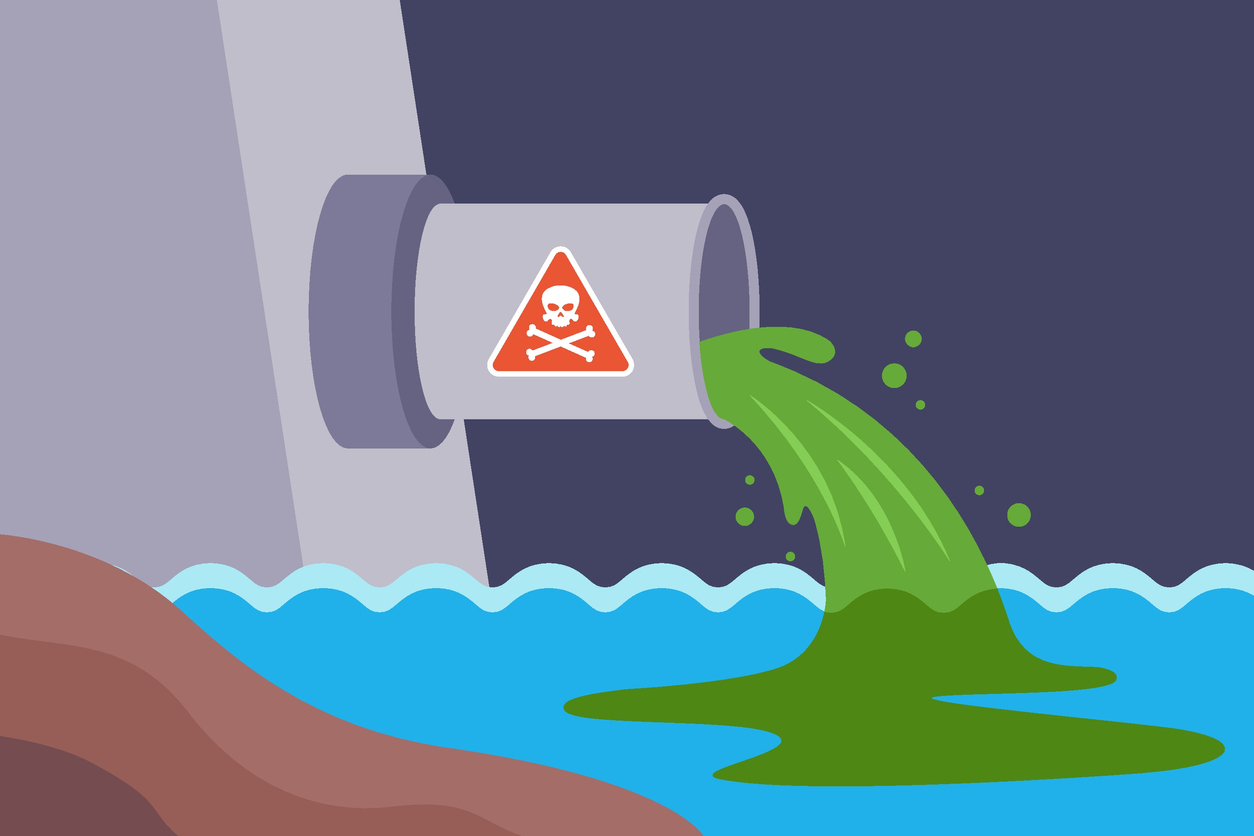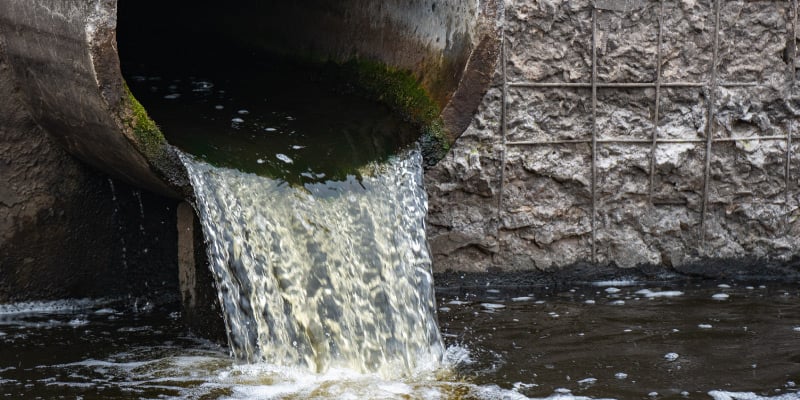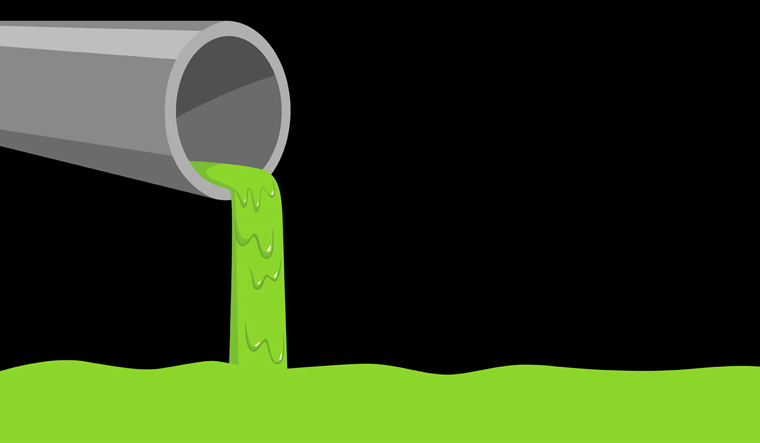Leading Industrial Wastewater Treatment Solutions: Guaranteeing Conformity and Efficiency
Leading Industrial Wastewater Treatment Solutions: Guaranteeing Conformity and Efficiency
Blog Article
How Fluid Garbage Disposal Functions: An In-depth Summary of Techniques and Technologies Used

Overview of Liquid Waste Kind
The intricacy of fluid waste kinds necessitates an extensive understanding of their attributes and ramifications for disposal. Liquid waste can extensively be classified right into several kinds, including industrial, local, agricultural, and contaminated materials. Each category shows distinctive residential properties, requiring details management techniques to minimize ecological and health dangers.
Industrial liquid waste originates from making processes and typically includes a series of impurities, such as hefty metals, solvents, and organic substances. Municipal liquid waste, primarily consisting of wastewater from homes and business facilities, contains natural matter, nutrients, and virus (industrial wastewater treatment). Agricultural fluid waste, including runoff from ranches, may include fertilizers, chemicals, and pet waste, presenting dangers to water high quality and communities
Harmful liquid waste is characterized by its toxicity, sensitivity, or possible to trigger harm. This group includes substances like acids, bases, and particular chemicals that necessitate stringent handling and disposal methods. Recognizing these diverse fluid waste types is important for establishing effective disposal approaches and guaranteeing compliance with ecological guidelines. Proper classification and characterization are necessary for implementing proper treatment techniques and decreasing the damaging influence on public health and the setting.
Physical Treatment Techniques

Testing is the first action, where bigger bits and particles are eliminated from the liquid waste utilizing screens or grates. This process safeguards downstream devices from damage and guarantees smoother operation. Following testing, sedimentation makes use of gravitational pressure to different solids from liquids. In sedimentation tanks, heavier fragments resolve at the base, forming a sludge layer, while the clarified fluid can be additional treated.
Filtration is one more crucial technique that involves passing the fluid through permeable products, such as sand or membrane layers, to capture smaller sized fragments. This step enhances the top quality of the liquid, making it suitable for succeeding treatment procedures.

Chemical Therapy Methods
Chemical treatment strategies are necessary for efficiently taking care of liquid waste, specifically in dealing with liquified and colloidal pollutants that physical approaches may not appropriately eliminate. These strategies make use of different chemical representatives to neutralize, speed up, or change hazardous compounds right into less damaging kinds.
One common technique is coagulation and flocculation, see it here where chemicals such as alum or ferric chloride are contributed to advertise the aggregation of suspended bits. This procedure enhances sedimentation, permitting much easier elimination of the resulting sludge. In addition, oxidation processes, utilizing representatives like chlorine or ozone, are used to damage down intricate organic compounds and microorganisms, making the waste more secure for discharge or further treatment.
Neutralization is see this here another vital strategy, which readjusts the pH of acidic or alkaline waste streams to neutral levels, preventing prospective harm to downstream systems and the atmosphere. Moreover, progressed oxidation procedures (AOPs) make use of mixes of oxidants and ultraviolet light to degrade consistent contaminants, achieving a higher level of treatment efficiency.
Organic Treatment Procedures
Organic treatment procedures play an essential duty in the management of liquid waste by utilizing microorganisms to break down organic issue and reduce contaminant degrees. These procedures can be generally classified into anaerobic and cardiovascular therapies, each utilizing particular microbial neighborhoods to achieve effective waste destruction.
Cardio therapy includes the use of oxygen to facilitate the breakdown of organic materials by bacteria. This procedure is generally carried out in triggered sludge systems, where aeration storage tanks offer a conducive setting for microbial development, causing the oxidation of organic contaminants. The resultant biomass can be divided from treated effluent through sedimentation.
In comparison, anaerobic treatment occurs in the lack of oxygen, counting on different microorganisms to damage down organic issue. This technique is particularly helpful for high-strength waste, as it produces biogas, a renewable power source, while lowering sludge production. Technologies such as anaerobic digesters are often utilized in industrial and local applications.
Both anaerobic and cardio organic therapies not only lessen the environmental influence of liquid waste yet additionally help with source healing, making them essential elements of sustainable waste administration approaches. Their efficiency, effectiveness, and versatility support their extensive execution across numerous sectors.
Emerging Technologies in Disposal
Innovative methods to fluid waste disposal are rapidly developing, driven by innovations in modern technology and a boosting focus on sustainability. Amongst these emerging innovations, membrane bioreactors (MBRs) have actually gained grip for their capacity to incorporate organic therapy with membrane layer filtration, leading to premium effluent that can be recycled in numerous applications. MBRs make it possible for smaller sized impacts and more reliable operations compared to conventional systems.
One more appealing advancement is making use of anaerobic digestion integrated with nutrient healing innovations, which not only treats liquid waste but likewise creates biogas and recovers valuable nutrients like nitrogen and phosphorus. This dual benefit enhances source performance and reduces ecological influence.
In addition, progressed oxidation procedures (AOPs) are being taken on for the destruction of complicated organic contaminants. These methods utilize effective click now oxidants and stimulants to damage down pollutants at the molecular level, offering a very reliable remedy for tough waste streams.
In addition, the assimilation of man-made intelligence and artificial intelligence in waste management systems is optimizing functional effectiveness and predictive upkeep, resulting in lowered costs and improved ecological compliance. These innovations show a substantial shift in the direction of even more efficient and sustainable fluid garbage disposal practices.
Verdict
In final thought, effective fluid waste disposal necessitates a thorough understanding of different strategies and innovations. The integration of physical, chemical, and organic treatment approaches makes sure the reliable administration of varied waste kinds. Additionally, the appearance of innovative modern technologies enhances treatment efficiency and promotes sustainability in waste monitoring practices. By constantly progressing these methodologies, it ends up being feasible to resolve the expanding challenges related to liquid waste, eventually adding to ecological security and resource recuperation.
Fluid waste disposal is an important aspect of environmental administration, requiring a comprehensive understanding of various strategies and innovations tailored to different waste types. Fluid waste can generally be categorized right into numerous kinds, consisting of industrial, municipal, agricultural, and dangerous waste. Agricultural fluid waste, including runoff from ranches, might contain plant foods, chemicals, and animal waste, posing threats to water quality and environments.
Numerous physical therapy methods play a vital function in handling liquid waste successfully - industrial wastewater treatment.In verdict, effective liquid waste disposal demands a comprehensive understanding of numerous strategies and technologies
Report this page